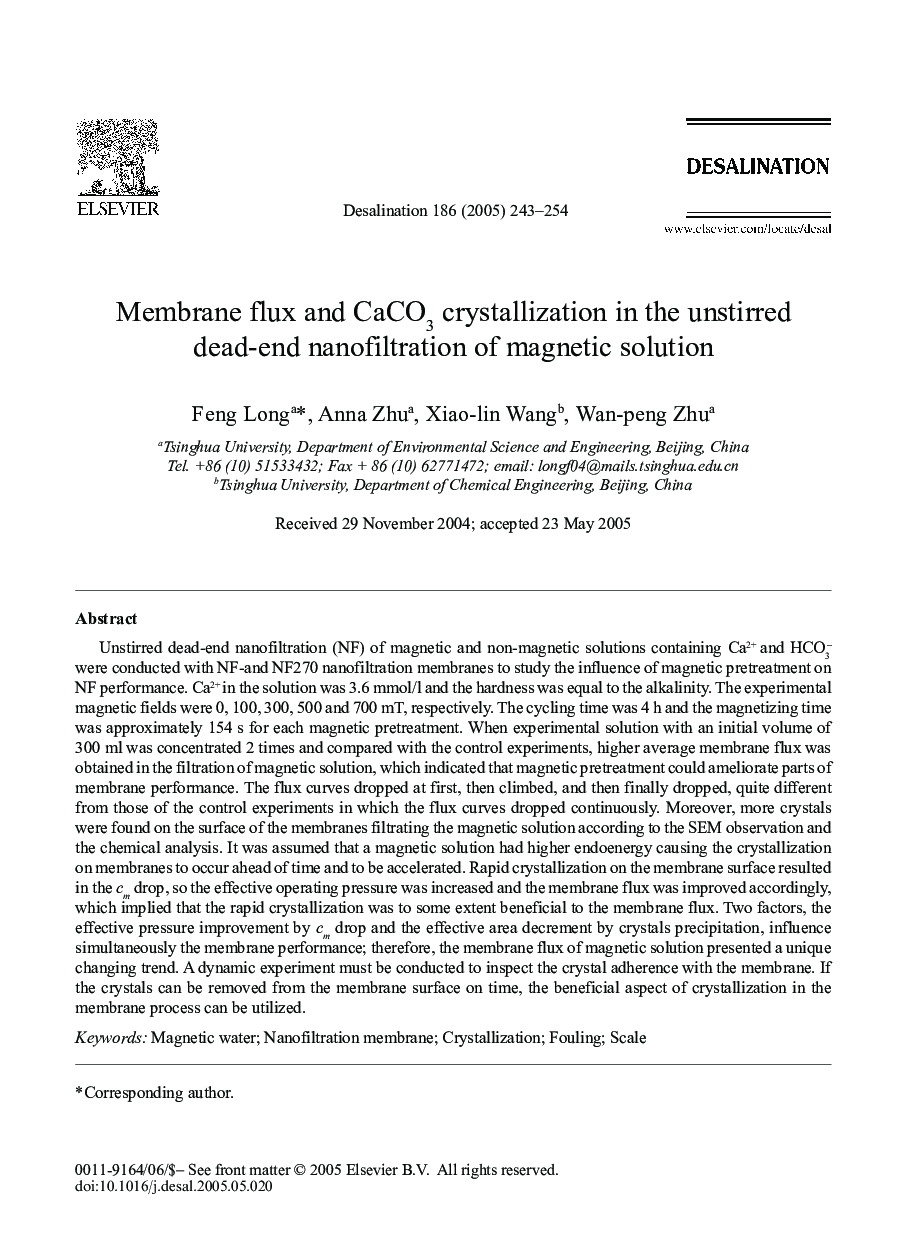| Article ID | Journal | Published Year | Pages | File Type |
|---|---|---|---|---|
| 9680785 | Desalination | 2005 | 12 Pages |
Abstract
Unstirred dead-end nanofiltration (NF) of magnetic and non-magnetic solutions containing Ca2+ and HCO3â were conducted with NF-and NF270 nanofiltration membranes to study the influence of magnetic pretreatment on NF performance. Ca2+ in the solution was 3.6 mmol/l and the hardness was equal to the alkalinity. The experimental magnetic fields were 0, 100, 300, 500 and 700 mT, respectively. The cycling time was 4 h and the magnetizing time was approximately 154 s for each magnetic pretreatment. When experimental solution with an initial volume of 300 ml was concentrated 2 times and compared with the control experiments, higher average membrane flux was obtained in the filtration of magnetic solution, which indicated that magnetic pretreatment could ameliorate parts of membrane performance. The flux curves dropped at first, then climbed, and then finally dropped, quite different from those of the control experiments in which the flux curves dropped continuously. Moreover, more crystals were found on the surface of the membranes filtrating the magnetic solution according to the SEM observation and the chemical analysis. It was assumed that a magnetic solution had higher endoenergy causing the crystallization on membranes to occur ahead of time and to be accelerated. Rapid crystallization on the membrane surface resulted in the cm drop, so the effective operating pressure was increased and the membrane flux was improved accordingly, which implied that the rapid crystallization was to some extent beneficial to the membrane flux. Two factors, the effective pressure improvement by cm drop and the effective area decrement by crystals precipitation, influence simultaneously the membrane performance; therefore, the membrane flux of magnetic solution presented a unique changing trend. A dynamic experiment must be conducted to inspect the crystal adherence with the membrane. If the crystals can be removed from the membrane surface on time, the beneficial aspect of crystallization in the membrane process can be utilized.
Related Topics
Physical Sciences and Engineering
Chemical Engineering
Filtration and Separation
Authors
Feng Long, Anna Zhu, Xiao-lin Wang, Wan-peng Zhu,
